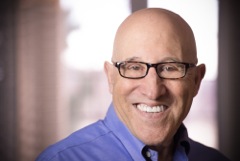 Don’t let your audience or hosts “capture” you and ruin your presentation.
Don’t let your audience or hosts “capture” you and ruin your presentation.
Great speaking starts with moving from the all too common mindset of Here I Am – my ideas, my thoughts, my goals, my objectives – to coming from a place of There You Are, where you can focus on the audience’s ideas, thoughts, goals and objectives. Yet, like most good things, you can take it too far and become so focused on your host or the audience that you lose your point of view.
We call it Audience Capture and it’s similar to Regulatory Capture. That’s where regulators like the Federal Reserve Board become so close to those they are supposed to regulate that they fail to do their jobs completely. Something similar happens when speakers become so focused on what their host or audience wants that they lose their energy, passion and message.
This is risky business for speakers. Your job is deliver a compelling talk to the audience in a way that creates action. While you should begin with an attitude of There You Are, shifting 100% of your attention to what others want risks the dilution of your message. The end result will likely not be as persuasive.
It can also happen in one-to-one conversations. Think about it. Have you ever had a one-to-one conversation where you set aside or modified your opinion or belief so that you could be more relatable to the person with whom you were speaking? Let’s call this Conversation Capture. Three of the reasons this happens are that we want the other person to:
1. Like us.
2. Agree with us.
3. Support us or sign an agreement.
If we do this consciously, it’s one thing. Oftentimes, however, we do it unconsciously and that’s risky business.
By setting your opinion or belief aside, you may not be perceived as someone with valuable thoughts and ideas. You will have entered the desert of wishy-washiness.
Now, take that one-to-one conversation and change it to one-to-many. That’s you giving a presentation to an audience of more than one person. If you fall victims to audience capture, you’ve more than entered that desert. You’re alone riding a dusty camel in the hot sun seeking an oasis.
So how do you avoid audience capture? Find the sweet spot between there you are and here I am. Acknowledge that there may be aspects of your talk that not everyone can relate to or agree with. Use stories and other techniques to overcome those deltas. The audience will respect you for paying attention to their needs and, even better, be more likely to buy into what you are selling.
The difference between winning and losing the deal often comes down to how information is presented. Do more than just wing it! Join The Speaking Intensive to learn more proven techniques from my career raising capital and as a Hall of Fame speaker.
“Transformational. A professional breakthrough.”
“Fantastic!! Ultimately a straight route to improve my impact and influence.”
“As much a Leadership Development experience as a Public Speaking course.”
“Thank you for pushing me to tap into “tools” I didn’t know I had.”
“Definitely the best program I’ve ever attended.”
© Copyright 2014 The Parisse Group, Inc.
Client Raves:
“Transformational. A professional breakthrough.”
“Fantastic!! Ultimately a straight route to improve my impact and influence.”
“As much a Leadership Development experience as a Public Speaking course.”
“Thank you for pushing me to tap into “tools” I didn’t know I had.”
“Definitely the best program I’ve ever attended.”
 Hall of Fame speaker Alan Parisse has been coaching presenters and delivering keynotes for over 25 years. Named “One of the Top 21 Speakers for the 21st Century” by Successful Meetings Magazine, he is a keynote speaker for a wide variety of industries and organizations. Alan is a passionate presentation coach to executives, financial advisors, sports stars and sales presenters.
Hall of Fame speaker Alan Parisse has been coaching presenters and delivering keynotes for over 25 years. Named “One of the Top 21 Speakers for the 21st Century” by Successful Meetings Magazine, he is a keynote speaker for a wide variety of industries and organizations. Alan is a passionate presentation coach to executives, financial advisors, sports stars and sales presenters.
Lisa Casden has been coaching presenters for 10 years. A former professional figure skater, coach and choreographer, Lisa leverages her unique background and point of view to help speakers organize their physicality in ways that best support their message.
has been coaching presenters for 10 years. A former professional figure skater, coach and choreographer, Lisa leverages her unique background and point of view to help speakers organize their physicality in ways that best support their message.

 Keynote Topics
Keynote Topics About Alan Parisse
About Alan Parisse Why Hire Alan?
Why Hire Alan? Client Testimonials
Client Testimonials Booking Request Form
Booking Request Form